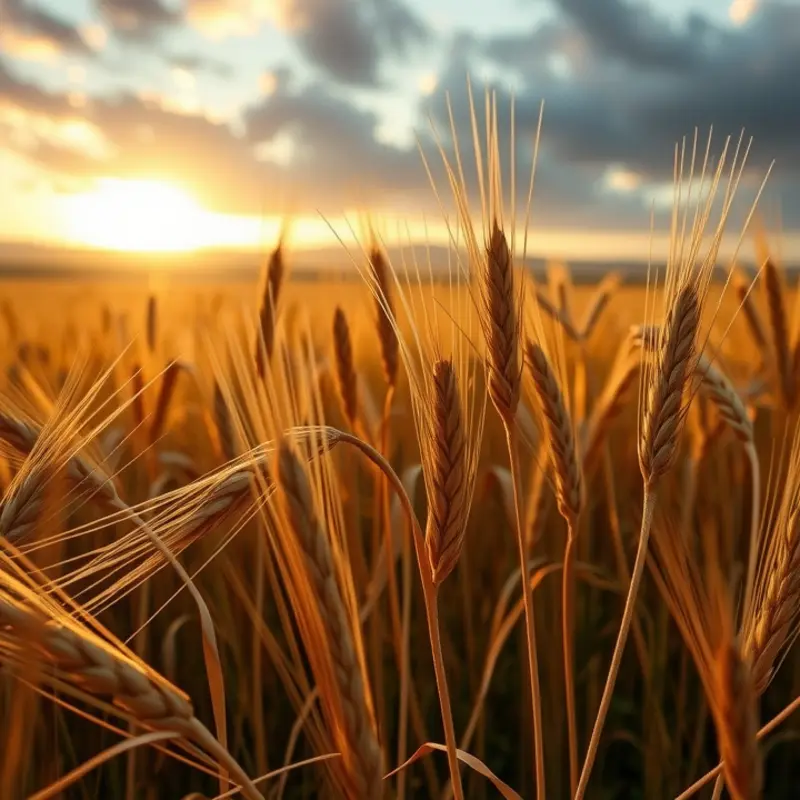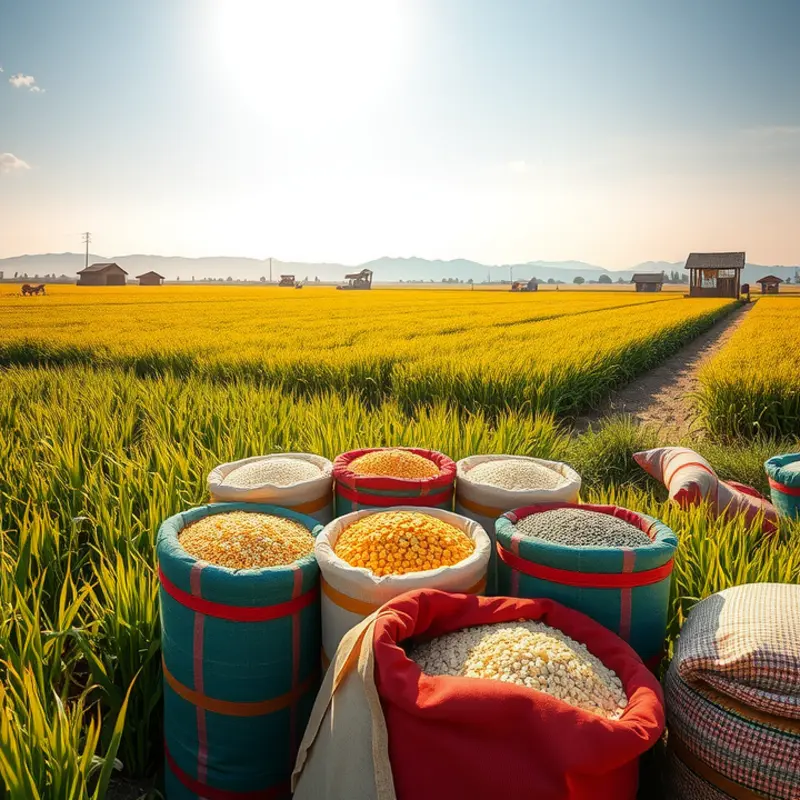Grains sustain civilizations, embodying rich narratives of culture and tradition across the globe. From the fertile plains of Mesopotamia to the terraced hills of the Andes, these humble seeds have transcended time and borders, transforming diets and cultural identities. This journey into the culinary history of grains reveals their vital role in shaping global cuisines, unearthing diverse methods of preparation and the profound stories interwoven with each grain’s harvest.
Foundations of Civilization: The Birth of Grains

Grains have been pivotal in defining the course of human civilization. For millennia, they have been the bedrock upon which societies have built their cultures and economies. From the Fertile Crescent to the banks of the Yangtze, the history of grains is a tale of human ingenuity and adaptation.
The journey begins about 10,000 years ago when the first seeds were sown in the ancient lands of Mesopotamia. Here, wild grasses such as einkorn and emmer wheat were domesticated through arduous trials and tribulations. This marked the dawn of agriculture, transforming nomadic hunter-gatherers into settled communities.
The discovery of grain cultivation techniques spread like wildfire along trade routes, allowing civilizations such as the Egyptians and Sumerians to flourish. In Ancient Egypt, wheat and barley were indispensable, sustaining the workforce that erected the pyramids. Their granaries were meticulously crafted, showcasing an early understanding of food storage and safety — concepts still pertinent today. For guidance on effective storage techniques in modern kitchens, explore eco-smart kitchen storage.
In parallel, across the Indus Valley, similar advancements were made with barley and rice as staple crops. These cereals supported thriving economies and became integral to their cultural practices and rituals. Rice, in particular, went on to become a cornerstone of Asian diets, with its cultivation spreading across Asia, thanks to innovations in irrigation techniques.
Meanwhile, in the Americas, maize was emerging as the central grain. It was cultivated roughly 9,000 years ago in the Balsas Valley of Mexico. A versatile crop, maize adapted to various climates and terrains, ultimately becoming a fundamental aspect of the Aztec and Mayan cuisines. The domestication of maize also led to the development of tamales and tortillas, foods that persist in contemporary diets.
Each civilization’s relationship with grains created unique dietary patterns that influenced their lifestyles. These crops not only provided sustenance but also became symbols of life and prosperity. Grains enabled humans to store surplus, paving the way for population growth and urban development.
The innovation did not stop at cultivation. Over time, milling and baking techniques evolved, refining the grains into more palatable and nutritional forms. Fermentation processes were discovered, leading to the creation of bread, beer, and other staple foods, fundamentally altering cooking practices and social engagements.
Through this sprawling tapestry, grains have played a crucial role in shaping global culinary traditions. They have sustained empires, influenced trade routes, and even sparked conflicts. As humankind continues to innovate with ancient grains and discovers new ones, these humble seeds remain as relevant now as they were thousands of years ago.
Grain Odyssey: Cultural Transformations Through Time

Grains have transcended the mere role of sustenance, evolving into cultural symbols and culinary marvels. As they traversed continents, grains adapted to diverse climates, terrains, and culinary traditions, often taking center stage in local cuisines.
In the fertile crescent of Mesopotamia, barley emerged as a staple grain. It laid the foundation for what would become a complex and varied culinary culture. People adhered to methods of fermentation, creating nourishing bread and potent beverages. Meanwhile, across the Mediterranean, wheat cultivation flourished in Greek and Roman societies. It was milled for flour, forming the basis for the much-revered bread, which evolved into an essential part of communal and religious feasts.
In Asia, rice became the cornerstone of culinary practices, thanks to its adaptability to flooded paddy fields. From steamed bowls in China and Japan to the spicy biryanis of India, rice reflects a spectrum of flavors and cooking methods. In sub-Saharan Africa, millet and sorghum, resilient against harsh climates, became central in traditional recipes. These grains were not only vital for porridge but also for brewing local beers, underscoring their versatility.
Maize, or corn, holds a special place in the Americas. Indigenous cultures in Mesoamerica revered maize as a gift from the gods. It was transformed into masa for tortillas and tamales, essential components of daily meals and celebrations alike. The arrival of European colonists expanded maize’s reach, influencing global diets.
Cultural shifts have continued to impact how these grains are perceived and utilized. Technological advancements have revolutionized milling practices, allowing finer flours and a broader array of textures in cooking. Such innovations fuel the creation of pastries and pastas, charting new culinary territories.
Moreover, globalization has facilitated the exchange of grain-based recipes across borders. Today, quinoa, once sacred to the Incas, is cherished worldwide for its nutritional benefits and versatility. It serves as a viable alternative to gluten-containing grains, affirming the global trend toward diverse and inclusive eating habits. Those wanting to minimize waste or explore meals that maximize grain use might explore minimal prep dinner ideas.
Thus, the journey of grains mirrors the human journey—intertwined with adaptation, exploration, and innovation. As culinary traditions continue to evolve, these humble seeds persist as crucial threads in the rich tapestry of global gastronomy.
Final words
Grains are more than just ingredients; they are the threads woven into the tapestry of human history and culture. From ancient civilisations that first cultivated them to today’s culinary enthusiasts who experiment with diverse grains in their kitchens, the significance of grains in shaping diets and traditions is undeniable. Each grain carries with it a legacy, a connection to the land and its people that enriches our plates and stories. As we explore contemporary preparations of grains across the globe, understanding their roots helps celebrate the cultural diversity they inspire in our kitchens and communities.








